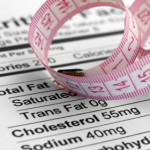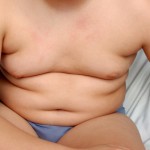In January, 2013 a rather startling article in JAMA concluded that its not only okay, but actually may healthier, to be somewhat overweight and it's not bad to even be a little obese.
That conclusion took many of us by surprise and was hard to swallow. I read it and went into my hypercritical mode.
To start with almost everyone would agree that those who are really skinny may not be healthy, unless they're a marathon runner or some other kind of well-trained athlete. And, by the same token, being truly obese is bad for you.
But why should people who are overweight be healthier than those of us who are reasonably trim? And, to step things up a notch, why should being mildly fat not carry some risk?
This was a meta-analysis which an online dictionary defines as a systematic method that takes data from a number of independent studies and integrates them using statistical analysis.
In other words, the authors weren't doing their own large prospective study (one that starts at the current time and follows a group of research subjects over a {hopefully} extended period of time) but was a project that (retrospectively) reviewed the past work of others.
The gold standard in medical research, from my reading, is to have a randomized, controlled, double-blinded, prospective study. That translates into the research subjects being allotted by a method that picks them in a non-biased fashion to some kind of treatment or another (or none) and neither the researchers or the "researchees" know what group they're in. Ideally the total number of subjects should be quite large and the study starts when they're chosen and goes on from there.
Here there wasn't a treatment and it was reasonable to look at other authors' work done in the past, but of course there are hazards in doing so. What often appears to happen, is a group of researchers say, "Let's look at problem X by seeing what other medical scientists have done. And we'll accept or not accept those previous studies by criteria we can agree upon."
These authors retrospectively examined data from 97 studies including nearly three million subjects (2.88M), but those came from a pool of over 7,000 articles and excluded, for pre-set and logical reasons, 98% of those.
In the same edition of JAMA were comments in a superb editorial piece, "Does Body Mass Index Adequately Convey a Patient's Mortality Risk," It mentioned a 1942 statistician working (as my Grandpa Sam did) for the Metropolitan Life Insurance Company said staying at the same weight you were at at age 25 meant you had a better chance for a longer life. Later on height and weight tables were compiled and a number called the body mass index could be derived using those two measurements and, in general, the CDC said, it was a reasonable estimate of how lean or chubby you were.
Normal BMI is said to be between 18.5 and 25 (I'm at 21 at present), so underweight would be represented by those with a BMI <18.5, the overweight range is 25-30, low-grade obesity from 30 to 35, grade 2 obesity from 35 to 40 and grade 3 obesity from 40 on up.
Since the origin of the concept behind BMI was European (by a Belgian polymath somewhere between 1830 and 1850), it's usually measured as the weight of a person in kilograms divided by their height in meters squared. A close American version is weight in pounds divided by height in inches squared and then multiply by 703.
So at 150 pounds and 71 inches tall (I've lost at least a half an inch over the years), my BMI calculates as 20.9. If I weighed 200 pounds, my BMI would be 27.9 and I'd be called overweight. At the most I've ever weighed (216) and with my younger height of 71.5 inches, my BMI was 29.7. That's a 66 pound difference; I thought I was fat at that weight.
Total mortality, the editorial said, has a U-shaped relationship with BMI, with considerably higher risk of death at BMI's less than 18.5 or greater than 30.
That's long been the traditional viewpoint, but the data in the January JAMA article didn't seem to agree with the latter finding. The editorial clarified matters considerably, saying the normal range can be divided in two parts with those having a BMI between 18.5 and 22 having a higher mortality rate than those who BMI is between 22 and 25.
I'd go a step further by saying there are those of us who have a relatively low BMI because we're lean and exercise a lot and others who have a similar BMI because of chronic illness or poor nutritional intake.
I have well-muscled legs (I ride a recumbent bike for 15+ miles and 500+ calories six days a week), but I've never had strong arms and I'm small-boned. Since the beginning of 2009 when I went back on my own eating plan and really increased my exercise time, I've gone from a 38 inch waist to 33 and given away slacks and belts. If I weighed 200 pounds and was a large-boned guy with a great torso and a small waist, I think my risk factors for death would be less than if I had a big belly and weighed the same 200 pounds.
So we need to add waist measurement and probably blood pressure, blood lipids (HDL cholesterol and triglycerides) and fasting blood sugar to the BMI to get a better estimate of risk factors for dying.
That still doesn't explain why those with a BMI of 30 to 35 appear to do well. One comment is that docs have gotten considerably more aggressive in looking at and managing blood pressure, lipids and elevated blood sugars in those of their patients who are overweight or obese.
Weighing what I do now, down nearly 30 pounds since early 2009, my own physician hasn't suggested I get a fasting blood sugar or a lipid panel for several years.
I bet she would if I weighed 216 again.





















